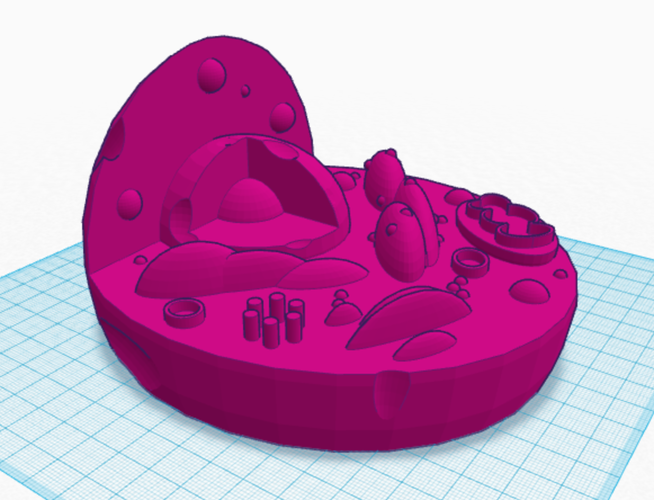
Animal Cell Model
pinshape
I've been fascinated by biology for as long as I can remember, and one of the most mind-blowing topics I've delved into is the intricate world of cellular anatomy. It's amazing to learn that our bodies are comprised of countless tiny yet incredibly complex functional structures. In my experience, visualizing the structure of an animal cell has been instrumental in grasping the concept. The cell is a challenging object to conceptualize without some means of imagining its organelles and their precise positioning. To aid in this process, I've created a three-dimensional model of an animal cell that will hopefully provide a tangible understanding for individuals with visual impairments. My cell model includes at least one representative of each major organelle found in most animal cells. It's essential to note that the model is a generalized representation and not specific to any particular type of cell, such as a blood cell or bone cell. The final version of my design is colored pink for visual clarity. To identify the organelles, I ungrouped the cell model, assigned distinct colors to each structure, and took a screenshot. In the image labeled "KEY," the organelles are color-coded as follows: the nucleus is depicted in purple with a darker purple nucleolus at its center, the mitochondrion is colored pink, the centriole is yellow, the Golgi apparatus is orange, the ribosomes in the white cytoplasm are red, the rough endoplasmic reticulum is dark green, and the smooth endoplasmic reticulum is light green. The light blue objects in the cytoplasm represent a combination of various vesicles, including lysosomes; I made some of them hollow to demonstrate that they contain space for phagocytized substances, enzymes, etc. To simplify the model and make it easier to print, I removed most of the bottom of the cell. The back and lower part are rounded to indicate the more or less rounded shape of the whole cell. I included some indentations in the cell to show that it's not a perfect sphere; for instance, the indentation in the top left could represent a place where substances are being phagocytized by the cell. The indentations on the outer part of the nucleus are the nuclear pores. When designing this model, I faced significant challenges with the endoplasmic reticulum and mitochondrial membrane. Initially, I had both the ER and mitochondrial membrane as simple squiggles, but I was concerned that they didn't accurately represent their three-dimensional structures. I eventually devised ways to make both structures more accurate by using stretched ellipses for the ER and half-tubes for the mitochondrial membrane. Check out the images above to see how my design evolved over time. I only just completed this design a couple of days before the contest deadline, so I don't expect to be able to print it before the deadline. I've never attempted to print anything as complex before, so I'm not sure how it will turn out. Despite this uncertainty, I wanted to share my model for the contest in case anyone might find it helpful. This model is undoubtedly the most intricate design I've ever created using Tinkercad. I was genuinely surprised and impressed by just how much could be accomplished starting with basic geometric forms. I sincerely hope that this cell model will serve as a valuable educational tool.
With this file you will be able to print Animal Cell Model with your 3D printer. Click on the button and save the file on your computer to work, edit or customize your design. You can also find more 3D designs for printers on Animal Cell Model.
